Canon EF-S 15-85 mm f/3.5-5.6 IS USM
4. Image resolution
Let’s have a look how the situation looks like at the center of the frame, with the corresponding graph for EOS 20D presented below.
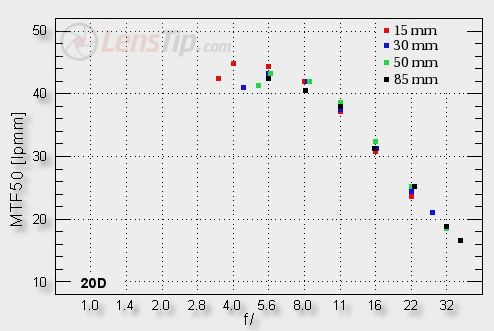
Please Support UsIf you enjoy our reviews and articles, and you want us to continue our work please, support our website by donating through PayPal. The funds are going to be used for paying our editorial team, renting servers, and equipping our testing studio; only that way we will be able to continue providing you interesting content for free. |
- - - - - - - - - - - - - - - - - - - - - - - - - - - - - - - - - - - - - - - - - - - - - - - -
We can only write one thing here – we want to applaud the lens as the behavior is almost perfect. Usually, to acknowledge that the lens isn’t bad we require that it reach over 30 lpmm at the maximum aperture, and 40 lpmm at the sharpest apertures. Canon EF-S 15-85 mm doesn’t have any problems with largely exceeding 40 lpmm at its maximum aperture and for all focal lengths. The maximum results are obtained after slightly stopping down and reach just over 44 lpmm. What’s more, there basically no differences between particular focal lengths. The lens behaves evenly and taking into account the range of focal lengths it provides, it’s hard to write any bad words about. Huge praise for Canon!
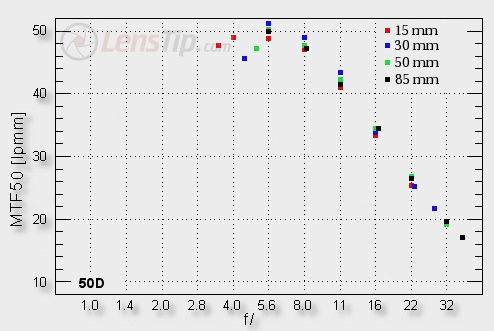
What we can see at the center of the frame on 50D perfectly confirms our conclusions drawn on the strength of 20D measurements. The graph above shows, that this time at the maximum aperture MTF values reach over 45 lpmm, and after slightly stopping down reach as much as 50 lpmm. EF-S 15-85 mm in combination with 50D or 7D will give us exceptionally crisp images.
A few times we’ve encountered a situation that some zoom lenses surprised us positively at the center of the frame, but the edges left a lot to be desired. How is it in this case? Let’s have a look at the graph below, where the MTF50 values obtained at the edge of Canon 20D’s sensor are presented.
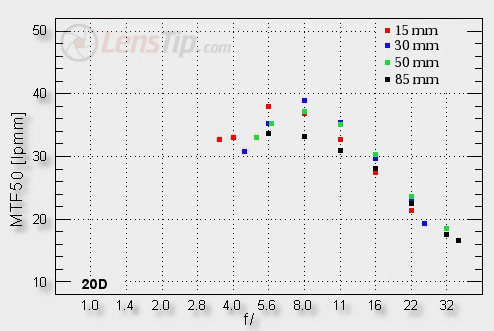
And again, there are no reservations. With such universal focal length range, none of them falls behind our expectations. What’s more, even at the maximum aperture we get values higher than 30 lpmm, which allows us to enjoy sharp images. After stopping down by 1-2 EV, in the range 15-50 mm we have no trouble getting to 36-39 lpmm, so values that we think of as very good. Here the 85 mm focal length is a bit worse than the others, but the results obtained at it are still good.
Again, the results obtained on 50D confirm what we got on 20D. The corresponding graph is presented below.
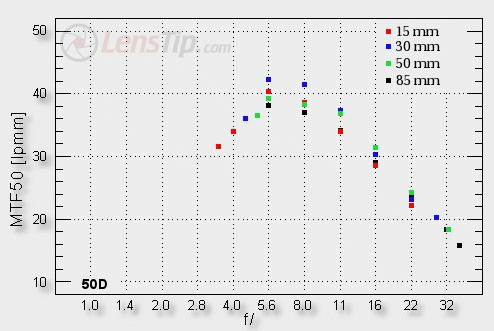
What we saw can’t be described in any other words than excellence. We don’t really get the record breaking resolution, but it’s hard to expect them from a universal zoom lens. Despite that, it’s not that far from the records, as basically every combination of aperture value and focal length will let us enjoy very sharp image. What more do we need?
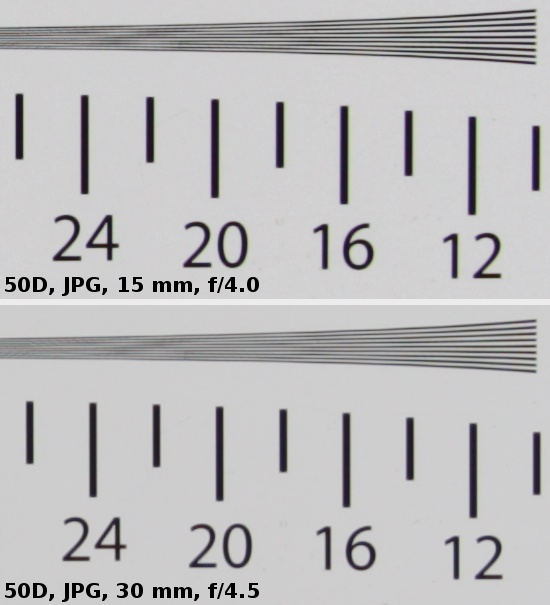 |






